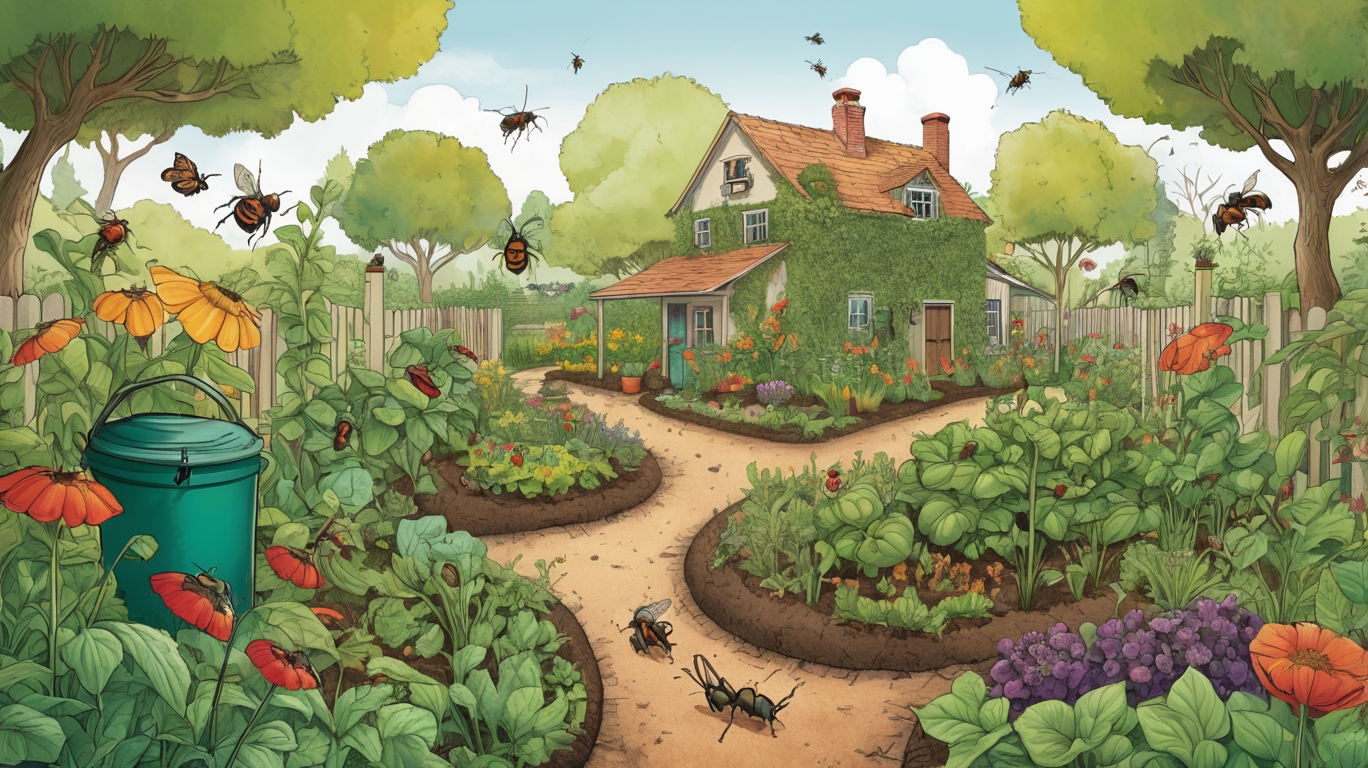Sustainable Pest Management: Gentle Solutions for a Healthier Garden
In the quest to maintain a thriving garden or farm, pests can sometimes feel like an inevitable challenge. However, reaching for harsh chemical solutions isn’t the only—or even the best—way to protect your plants. Sustainable pest management focuses on long-term, eco-friendly strategies that work with nature rather than against it. By adopting these methods, you can cultivate a healthier garden while preserving the environment.

Understanding Sustainable Pest Management
Sustainable pest management (SPM) prioritizes prevention, balance, and minimal harm to ecosystems. Instead of eradicating pests completely—which can disrupt natural cycles—SPM aims to keep pest populations at manageable levels through natural and low-impact methods.
Key Principles of SPM:
- Prevention Over Reaction – Healthy soil, proper plant spacing, and crop rotation reduce pest attraction.
- Biodiversity – Encouraging beneficial insects and companion planting creates a balanced ecosystem.
- Least-Toxic Interventions – When necessary, opting for organic or mechanical controls minimizes harm.
Effective Sustainable Pest Management Strategies
1. Encourage Beneficial Insects
Not all insects are pests—many are natural predators that keep harmful bugs in check. Ladybugs, lacewings, and parasitic wasps feed on aphids, mites, and caterpillars. To attract them:
- Plant nectar-rich flowers like marigolds, dill, and yarrow.
- Avoid broad-spectrum pesticides that kill helpful insects.
2. Companion Planting
Some plants naturally repel pests or enhance their neighbors’ resilience. For example:
- Basil deters flies and mosquitoes near tomatoes.
- Nasturtiums lure aphids away from other crops.
- Garlic and chives discourage beetles and borers.
3. Mechanical and Physical Controls
Simple barriers and traps can reduce pest damage without chemicals:
- Row covers protect young plants from insects.
- Copper tape repels slugs and snails.
- Handpicking larger pests (like caterpillars) can be surprisingly effective.
4. Organic Sprays and Natural Repellents
When pests become problematic, gentle solutions like these can help:
- Neem oil disrupts pests’ life cycles without harming beneficial insects.
- Insecticidal soap targets soft-bodied pests like aphids.
- Diatomaceous earth (food-grade) deters crawling insects by dehydrating them.
5. Soil Health and Crop Rotation
Healthy soil grows strong plants that resist pests naturally. Practices include:
- Composting to enrich soil with nutrients.
- Rotating crops to prevent pest buildup in the soil.
- Mulching to retain moisture and suppress weeds (which can harbor pests).
The Long-Term Benefits of Sustainable Pest Management
By embracing these strategies, you create a garden that thrives in harmony with nature. Benefits include:
- Reduced chemical exposure for you, wildlife, and pollinators.
- Improved soil and plant health, leading to better yields.
- Resilient ecosystems where pests are kept in check naturally.
Final Thoughts
Sustainable pest management isn’t about perfection—it’s about balance. By observing your garden, fostering biodiversity, and choosing gentle interventions, you can manage pests effectively while nurturing a vibrant, eco-friendly space.
Have you tried any of these methods in your garden? Share your experiences in the comments below!